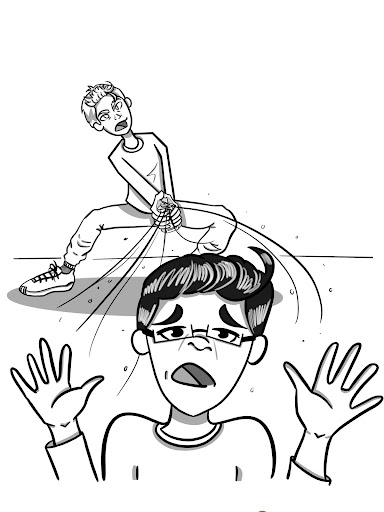Fears over COVID-19 have morphed into xenophobia, and it’s not acceptable
March, 2020
Racism is embedded in world history: people scapegoat foreigners and different cultures for problems and crises. The current global pandemic is no different — people around the world and at home have started to blame and attack Asians for the dissemination of the coronavirus. This should not be accepted in our modern, tolerant, and plural society.
In a subway station in New York City’s Chinatown, a man attacked a woman wearing a facemask, screaming at her to stay away and calling her diseased. She was kicked, shoved into a wall, and hit on the head as a primary reaction to her race. A local newspaper in France called Le Courier Picard used headlines such as “Le Peril Jaune?” and “Alerte jaune” meaning “yellow peril?” and “yellow alert,” completed with an image of a Chinese lady wearing a mask. French Asians retaliated with the hashtag, #iamnotavirus, on various social media platforms. Countless Asians all over the world suppress their coughs and hold in every wheeze. In a Los Angeles Times article published on February 3, Rosen Hyunh said, “I feel like every time I cough, people are going to be uncomfortable with that. I shouldn’t have to feel that way.” Some PHS students have posted on their social media stories or talked about how this is a “Chinese virus,” and that we should punish or subjugate Asians for spreading the epidemic to the United States.
The onslaught of racism that the Asian population has faced since the conception of COVID-19 is unwarranted, unnecessary, and ultimately exposes the widespread ignorance of individuals about the virus. It is important to address the causes of the virus in China, but casual racist comments and microaggressions such as “the coronavirus is caused by Chinese people eating freaky stuff” are not acceptable. Most Asians have absolutely nothing to do with the issue. Less than ten percent of those living in mainland China go to wet markets, where animals carrying the virus are said to have originated. And most Chinese people have never eaten the virulent exotic animals sold in these markets due to their high prices, limited supplies, and ethical concerns. If most of the individuals in mainland China share no connection with COVID-19, why in the world do we expect the Asian students at PHS to be the first to contract the virus? We have allowed our panic over this epidemic to manifest in our perception of our peers. When it comes down to it, the most dangerous aspect of the coronavirus at PHS is not the disease itself, but the racist sentiments that it instills in our student body.
Fundamentally, Asians have the same chance of catching the coronavirus as any other race. The races, ethnicities, religious affiliations, and genders of those victimized by the virus are utterly arbitrary. It isn’t as if the virus goes around in search of individuals who fit a certain template, or check a few boxes. Anti-Asian sentiments have the ability to amount an even greater impact on the PHS community, as our school has a significantly higher percentage of Asians than other American schools, with 26 percent of our students being Asian compared to an average of four to five percent in other American schools. Many of the issues that Asians are facing around the world are due to xenophobia. Even though our school is fortunate enough to not see a significant increase in racist attacks on Asian people, there have still been snide comments and snapchat and instagram story posts that blame and scapegoat Asians for this global pandemic. As a collective student body, we should condemn such actions and in the strongest possible terms make it clear that hate has no home in the halls of PHS.